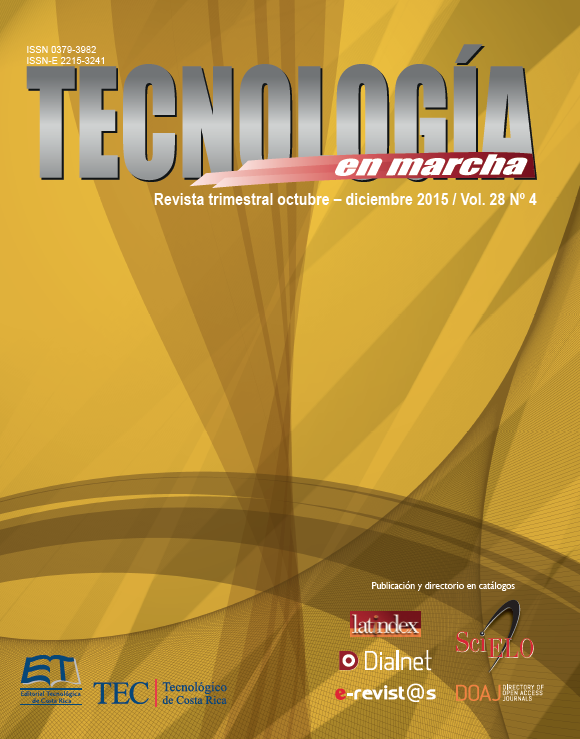Carotenoids in nutraceutical products comparison derived from two varieties of sweet potato and cassava
Main Article Content
Abstract
Costa Rica’s life expectation is the higest from Latin America. The average age for the whole continent is 74 years. The age for Costa Rica is 80 and for Chili is 79 (Organización Panamericana de la Salud, 2014). This situation is the result of an addition of variables, but it is obvious that
this little country has a population that is worried about factors as life style and nutrition. Food manufactory and food producers should offer new products, with a superior concentration of nutrients, instead of fats and processed carbohydrates (as sugars and starches). The government institutions, as public universities and ministries had to become a motor and support to achieve this objective.
A research group of the public university INSTITUTO TECNOLÓGICO DE COSTA RICA, stablished a study project called “Desarrollo de alimentos nutracéuticos a partir de cultivos biofortificados para combatir el efecto del cambio climático en la seguridad alimentaria de Costa Rica”. The project is managed by a researcher of the Agrobusiness Department. Other Departments are collaborating too, as Chemistry, Business Management and Agricultural Engineering.
The new products development is focused in different age populations. The age groups selected are children from six to twenty-four months old, teenagers and finally elderly people. For the first group, it had been developed “home- made baby foods” and for the second one baked snacks. Researchers used carotenoid bio fortified crops, as manioc and sweet potatoes. Both crops are produced at the North side of Costa Rica.
To be sure that by using bio fortified crops is possible to obtain products with a higher concentration of nutrients, researchers made a comparison. They produced baby foods and nutraceutical snacks with biofortified crops and non-fortified crops. The total amount of carotenoid from the different samples was analyzed at the CITA (Centro Nacional de Investigación en Tecnología de Alimentos).
As a result, it was found that the total amount of carotenoids is ten times higher in products prepared with bio fortified crops than in products prepared with non bio fortified crops. It is important to take into account that the samples were prepared using the same procedures, equipment and ingredients. For the food products elaborated with non bio-fortified crops, the total carotenoids content is in average 300 μg/100 wet material. The same valor, using bio-fortified crops is 4000 μg/100 wet material.
Article Details
Los autores conservan los derechos de autor y ceden a la revista el derecho de la primera publicación y pueda editarlo, reproducirlo, distribuirlo, exhibirlo y comunicarlo en el país y en el extranjero mediante medios impresos y electrónicos. Asimismo, asumen el compromiso sobre cualquier litigio o reclamación relacionada con derechos de propiedad intelectual, exonerando de responsabilidad a la Editorial Tecnológica de Costa Rica. Además, se establece que los autores pueden realizar otros acuerdos contractuales independientes y adicionales para la distribución no exclusiva de la versión del artículo publicado en esta revista (p. ej., incluirlo en un repositorio institucional o publicarlo en un libro) siempre que indiquen claramente que el trabajo se publicó por primera vez en esta revista.

